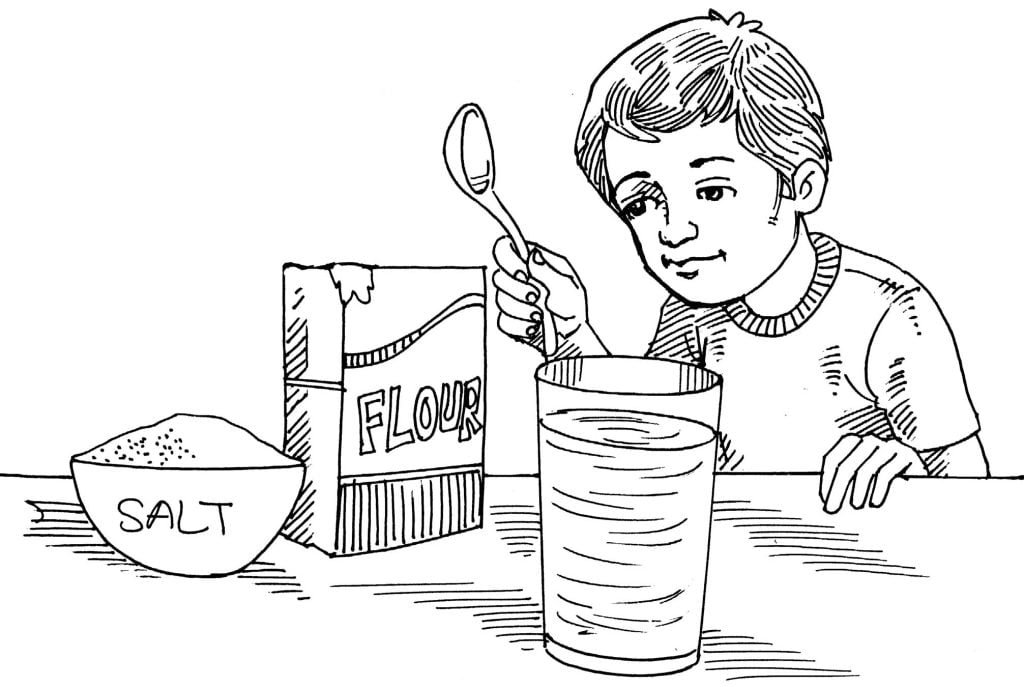
Chemists often talk about solutions and suspensions, and also emulsions and mixtures. In a solution, one substance is thoroughly dissolved in another (salt and water). In a suspension, one substance gets mixed throughout the other, but is not dissolved (soil and water).
In an emulsion, one liquid “floats” in another, but is not dissolved. The spread mayonnaise is a perfect example of an emulsion. But a mixture, unlike the above, is made up of different substances that do not dissolve into one another or stay together. Salt and flour may be really mixed up. Try this experiment and find out what’s going on.
Things Required:
1/4 cup of flour
1/4 cup of salt
A glass
A spoon
Hot tap water
This Is What Happens:
Stir flour and salt together in the glass (do not add the water yet). Is it thoroughly mixed? Add the hot water to fill the glass. Stir well and wait about 30 minutes; then touch with your finger and taste the water.
This Is What Happens:
The water at the top tastes salty and white covers the bottom of the glass.
Science Behind It:
Salt and flour are a perfect mixture. These substances are so different that they cannot dissolve or chemically mix in any way. They also react differently to water. While the flour floats and then sinks to the bottom of the glass, the salt dissolves into the water to form a salt solution above the flour. Save the mixture for the next experiment,

